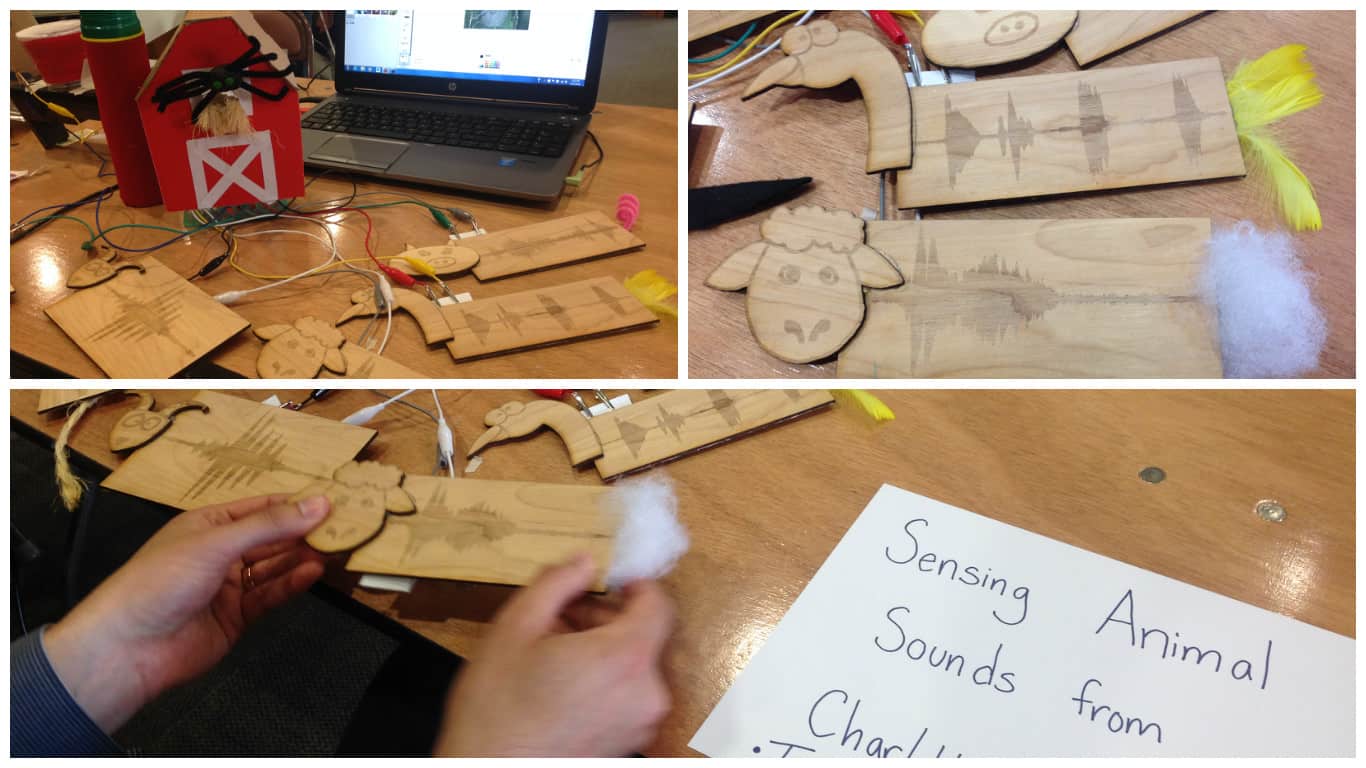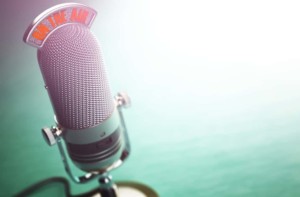9 More “Maker” Projects Invented By Teachers

At last year’s DesignDoDiscover (DDD) conference at Marymount School in New York City, the groups of teachers participating in the conference created 17 incredible projects that could all immediately be applied in their classrooms. In fact, my colleagues facilitated students creating projects similar to the Salmon Story MaKey-MaKey puzzles that were created at DDD!
This year the DDD was back in Palo Alto at Castilleja school, and this group of teachers invented a whole new set of amazing projects using an even broader range of tools, covering even more age levels and content areas.
1) Jungle Book Puppet Theater
This group’s puppet theater was a blast (see the feature image above), and exceptionally well-crafted. They set up the circuits in the back to change the lights when the mood of the scene changed, which added a great touch. You can see their circuitry setup in the bottom picture, which was very simple, with aluminum-foil-and-cardboard “buttons.”
2) Design Thinking Group Work Cube
This was a really amazing project and one that we might co-opt here at my school. The intention is for a group of students to keep this cube on their desk during group work and turn the side up that represents the phase of design thinking they’re currently working in. There are also alert signs that can be used as needed to help the teacher spot questions and changes without kids needing to sit around with their hands up.

3) Biome Dioramas (Grasslands)
This group made this lovely diorama and used littleBits to add some motion. They incorporated quite a bit of information, simulating what students might need to include besides animals and scenery, such as a map showing the locations of that type of biome and some symbols around the outer edge representing features like rainfall and temperature.

4) Topographical Maps and a Lighthouse
This project incorporated laser cutting, 3D printing and simple circuitry—the “Big 3 of Making” if you will (but don’t quote me on that—I’m not coining a phrase here). Creating the topographic map took quite a bit of sophisticated design for the laser cutter, and the teacher who did this project went from absolutely no knowledge of design for laser cutting to some pretty solid expertise.

5) Teachers Making Jewelry
This team was eager just to learn as many of the tools of the makerspace as possible and certainly succeeded, utilizing laser cutting in different media like wood and fabric. One pretty exciting element was their work figuring out how to move a single motif–the flower–between different design programs. The 3D printed flower ring uses the same original file as the laser cut flower earrings.

6) The No-Judgement Jelly
This was definitely the most software-intensive project. Inside our lasercut “case” is a Raspberry Pi that we programmed with Python to change color when the accelerometer changes orientation.”

7) Chinese Practice Board
I don’t know as many of the details of this project since I was less involved as a mentor for this team. However, they did a fantastic job organizing their circuitry to change LEDs depending on the knob at the bottom.

8) Sensing Animal Sounds (Kindergarten!)
This project had a pretty large team, and ultimately a LOT of components. Their goal was to develop a project that could realistically be executed by kindergarteners, with significant teacher support on the digital pieces of course. The idea was to expand sensing animal sounds to more ways of interpretation. They hand-drew the animals’ heads, then scanned and image-traced them in Adobe Illustrator to laser cut them. They also captured screenshots of the animal sounds’ waveforms to laser cut onto their bodies. Not pictured (except in the back left corner of the top left picture) they also created little sugar plates to view the sound waves in the thin layer of sugar as they passed through the speaker under the cup. This team both learned the tools they were using excellently and did some very deep thinking about the actual possibility of executing such a project with kindergarteners.

9) Finally, Heather Pang’s Incredible Historical Monuments
Although not a DDD project, I have to share the latest outcomes of Heather’s Historical Monuments project, in which her 7th-grade social studies classes invent historical monuments for important women throughout American history. She’s been collaborating with Angi Chau in the Castilleja makerspace for several years, and the students’ projects get better and better each year.

Again, DDD proved just how creative teachers can be when they have the tools, mentorship, teams, time and space to dig deep into their ideas. I would love to see more professional development opportunities where “presenters” facilitate initial project planning, then just get out of participants’ way and jump in to help when needed, rather than leading projects from the front–much like we strive to do for our students.
For more, see:
- Prepping a Learning Space to Grow into a Makerspace
- Introduction to Design for the Laser Cutter
- How to Utilize a Makerspace for World Language Learning
Stay in-the-know with all things EdTech and innovations in learning by signing up to receive the weekly Smart Update.








0 Comments
Leave a Comment
Your email address will not be published. All fields are required.